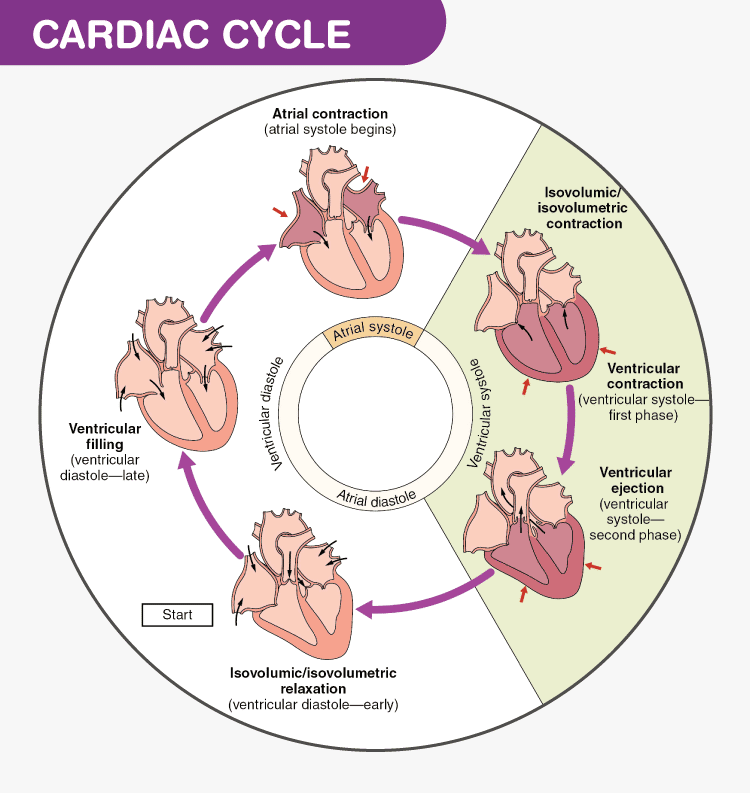Normal activities of the heart are regulated in an essential way, that’s it is auto regulated by specialized muscles or the nodal tissue, therefore the heart is referred to myogenic. A special neural center in the medulla oblongata can regulate the cardiac function through the autonomic nervous system. Neural signals do increase the number of heartbeat through the sympathetic nerves, the strength of ventricular contraction and thereby the cardiac output. At the same time, parasympathetic neural signals another component of ANS decrease the rate of heartbeat, the speed of conduction of action potential and thereby the cardiac output. Adrenal medullary hormones also increase cardiac output. The accelerator nerve of the sympathetic nervous system multiplies heart rate and the vagus nerve of the parasympathetic nervous system reducers heart rate.

Although the heart is a single muscle, it doesn’t contract all at once. The contraction spreads over the heart in a manner of a wave, starting from a small region of specialized cells in the right atrium named the Sino-Atrial Node (SAN). This is the hearts natural pacemaker, it initiates every beat. The impulse goes round from the SAN through the cardiac muscle of the right and left atrium, resulting in both atria to contract almost simultaneously.
After the impulse gets to a special part of the heart, right in the middle of the septum, named the Atrio-Ventricular Node, the impulse is hindered for almost 0.2 s. This permits time for the ventricles to fill completely. The AV Node relays the electrical impulse down to the septum, in line with the Bundle of His, down to the base of the ventricles. St this time the ventricles then contract simultaneously, right from the bottom upwards, and allow them to empty completely with each beat. The heartbeat began by the Sino-Atrial Node and move through the Atrio-Ventricular Node, remaining at the same rhythm until nerve impulses allow it to speed up or to slow down. Unlike other muscles, it doesn’t require a new nerve impulse for each.
The activity of the circulatory system is regularly changing according to the body’s demands, hence the heart rate is regulated accordingly. It is achieved by two kinds of the control system, one is nervous and the second one is chemical.
The nerves regulating the heart are of both forms viz. sympathetic and parasympathetic. Around the medulla oblongata of the hindbrain, a regulating center named cardio inhibition center is available.